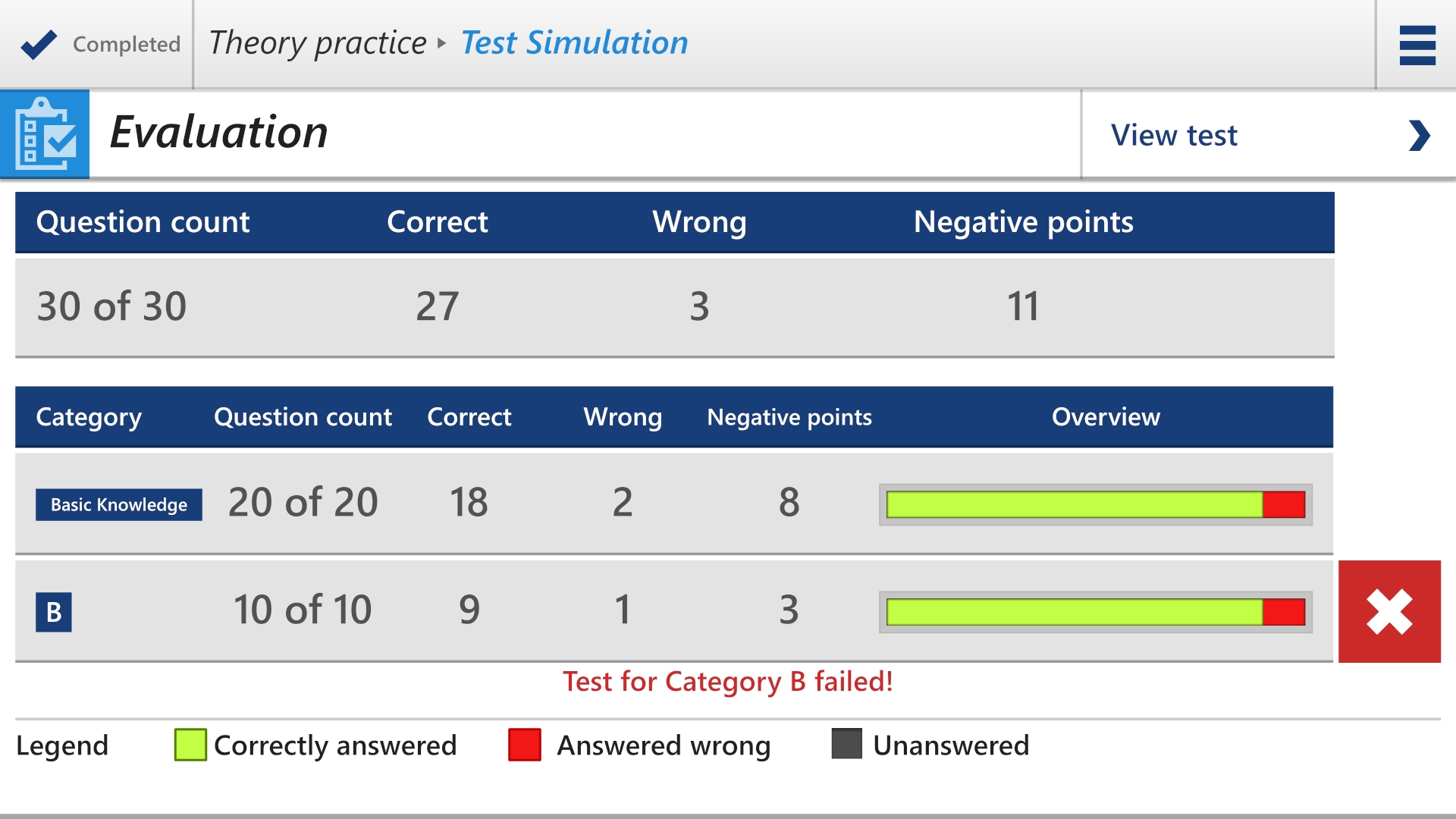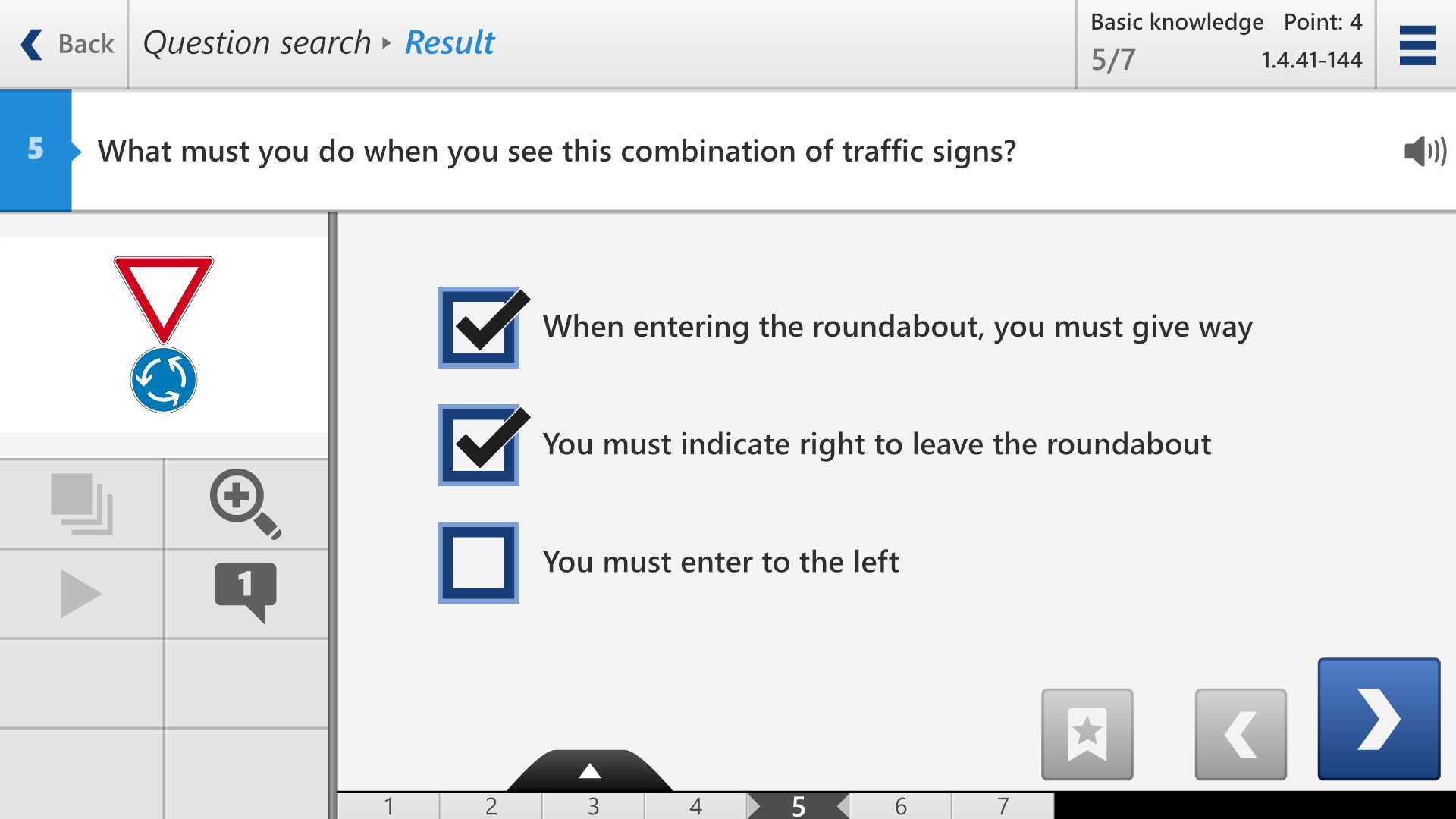
Getting a German Driver's License Part 2: The Written Test
After the bureaucratic process of having my American license sort of transferred, I was finally qualified to take the written test. But like everything else, this wasn’t as easy as I had imagined.
The thing is, I took my written driver’s test in the US more than 15 years ago. Besides which, if I recall correctly, the questions weren’t very hard. They mostly detailed easy things like the meaning of various signs, what to do in case of an accident, and super basic safety procedures. My memory may serve me wrong, but I’m pretty sure I didn’t even study for it and just showed up to class one day, took it, and passed. For readers not familiar with the American process, I should point out that driver’s ed (basically, driving school) was part of my high school curriculum. This meant that all of the theoretical and practical classes were part of my core education, along with American history and biology.
The German written exam is much more difficult and covers a range of topics:
- Legal conditions
- Traffic signs and devices
- Road system and its use
- Right of way
- Traffic regulations
- Speed, distance, and driving environmentally friendly
- Technical conditions
- Transporting passengers and goods, including using trailers
- …and a lot more.
Like I said, I think the New Jersey written exam covered maybe about half of those topics. I don’t even remember if we had to learn about using trailers.
Originally, I was determined to do the written test in German because doing it in English cost slightly extra and I wanted to save the money. Moreover, it was a question of pride—I’ve been in Germany for over ten years, dammit. What’s the big deal about doing it in German?
Soon enough, the big deal was realizing I don’t know much of the vocabulary in German and it was learning a lot of new words from “curb” (der Bordstein) to “catalytic converter” (der Katalysator). Taking the test in German required me to learn the new vocabulary but also to learn how to take the test. And I’m horrible at standardized tests. Give me a test where it’s actually testing your knowledge like a language exam and I’ll do fine. Tests where you have to know the format and understand the question? I get frustrated easily.
I went through all 1,093 questions in German, practicing in an app. When I said I was good to go, I went to the driving school and did a proctored test simulation so they could approve whether or not I was ready for the actual test. Unfortunately, I failed fairly miserably. Admittedly I hadn’t put in a ton of time and effort practicing, but I thought I’d be able to pass it. At that point, I decided to suck it up, pay extra to do it in English, and say to hell with my pride. I also decided to pay the extra money to borrow a book from the driving school that explained everything I needed to know in a way that was directly related to the test.
It was surprisingly helpful if painfully boring and dry to read the book, but I finally understood the concept of a priority road (Vorfahrtstraße) and how it works, and how Germans determine who has the right of way. This explained why Christian would always get so upset at a four-way stop while driving in the US; I always told him the rule is that whoever made it to the intersection first was the first to go, but if that wasn’t clear, it was more or less a game of chicken and you slowly roll forward. If people let you go, just drive.
I also was finally able to understand the difference between braking distance, reaction distance, and stopping distance. For the test, there are very specific formulas to determine how many meters you have based on a few different factors. This definitely was not on the New Jersey driver’s test. Physics? Nope. Just figure out if you can stop in time!

Between Christmas and New Year’s, I decided to just bite the bullet and really study, doing about five to ten practice tests every day, going through the app multiple times and answering all the questions I got wrong multiple times. At some point, I knew the videos and questions so well that I didn’t need to watch the video more than once to answer the question correctly. For fun, I asked Christian to take one practice test to see how he would fare. He failed worse than I did, even though he has had his license longer than me.
After New Year’s, I called the driving school again and said I was actually ready to take the written exam. I went in on a Thursday and did three proctored practice tests. The school’s rule was that if you could pass the proctored practice test three times in a row, you were ready to take the actual exam. Each practice test is as long as an actual test—you have 45 minutes to complete 30 questions. I did all three tests in about 30 minutes total and passed all of them without any problems. The driving school signed me up to take the test, but then I noticed that I was signed up to do it in German. I pointed this out and they called the TÜV (the office that runs the official test). But because of bureaucratic nonsense, the woman could change my preferred language in the system, but it took 24 hours to go into effect. However, the test couldn’t be taken on Friday because the test is only offered Monday to Thursday.

This was slightly annoying, but better that I hadn’t gone to the test only to find out I had to take it in German after more or less memorizing all the information in English. I practiced some more on the weekend, determined to pass the test on my first attempt. What makes the test fairly difficult is that you’re only allowed a maximum of ten negative points; anything over this, and you fail. The number of negative points is not determined by the number of questions you have wrong. Each question is worth a different number of points and based on how right or wrong you are, that could impact your score. So even on practice tests, I might only get three questions wrong (out of 30), but the number of points could add up to 14 negative points. You can see an example of this in the screenshot above.
I took the test on a Monday before going to work. I finished it in about 15 minutes and passed with only one question wrong:

The screenshot above is the screenshot from when I practiced. However, during the test, I took it literally and left out the answer, “You must indicate right when leaving the roundabout” because you indicate after you’ve seen the sign. That was my logic and it was the only question I got wrong. I passed with only four negative points.
Now that I’ve passed the written test, I’m taking a few driving lessons with a teacher. I haven’t ever learned to drive with manual, and here in Germany, if you do a license with an automatic transmission, then it says it on the license that you’re only allowed to drive automatic cars. I don’t really want this limitation, so I think it’ll be good to finally learn manual. Once the driving teacher thinks I’m ready to take the practical test, I’ll be able to do it and finally be able to get my license. I’m hoping that this is before the summer concert season starts so I can be designated driver for some shows.
In my last post, I outlined the time and money required with bureaucracy. Here’s the additional information related to the practical test in this post:
Time involved:
- According to the app, the total time I spent doing practice questions and tests: 2 days
- Reading the horrible dry book (rough estimation since I spread it out over several days because otherwise I would’ve poked my eyes out): 0.5 day
- Waiting for the bureaucratic change to take effect: 1 day
Add this to the total time up spent up to August 2018: 22 weeks, 3.5 days
Total costs:
- Changing the exam/app to English and borrowing the book from the driving school: 75€
- Cost of the proctored practice tests at the driving school: 60€
Total additional costs for written exam: 135€
Total costs, including those up to August 2018: 800.25€
I’ve already started my driving lessons, but I’ll talk more about them in a forthcoming post with the practical part about getting my German driver’s license. But one thing I’d like to say about them:
German integration level up:
— P. Sannie Lee (@geekrockchick24) January 25, 2019
I DROVE ON THE AUTOBAHN. WITH MANUAL.
Yes, it was slightly terrifying.
But it was also like meh, way more orderly than driving on the NJ Turnpike with shore traffic.

